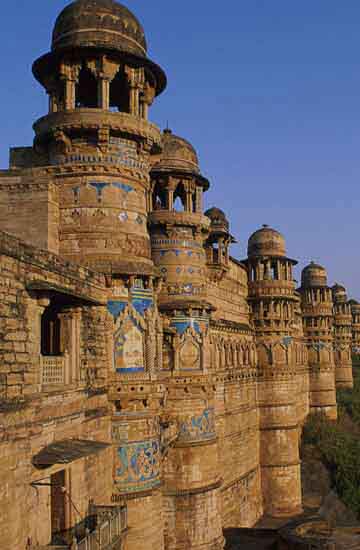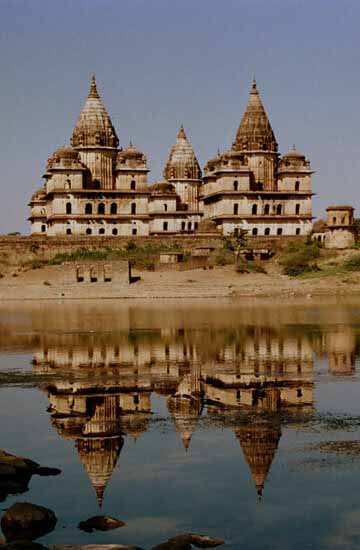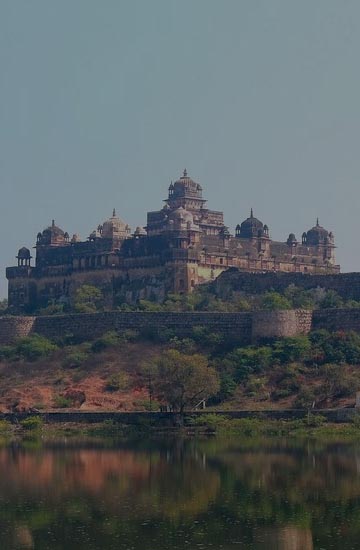Gwalior Mitaoli Padavali Bateshwar Chambal Sanctuary Gwalior TOUR PACKAGE 1 DAY
Search for Hotels in Madhya Pradesh
Mitaoli
Mitaoli is a village where the popular Chausath Yogini Temple lies - The temple is perched atop a hill surrounded by the lush greenery. A climb of approximately 100 steps will take you to the beauty of this splendid round temple. The striking views will definitely have you reaching for your camera too! As claimed by etchings and engravings in the temple, the ancient shrine is said to have been built by the Maharaja Devapala. In fact, the Parliament House in New Delhi is believed to have been inspired from the circular design and architectural intricacies of the Mitaoli temple! It is also said that Mitaoli, Padavali and Bateshwar made a golden triangle in which a university existed about a 1000 years ago! The alleged teaching centre was said to be a hub to impart education in Mathematics, Astrology and Hinduism to the children with the help of sun rays!
Padavali
The notable Padavali fortress was built in the 18th century by the Jat Ranas rulers of Dhaulpur. Graciously guarded by a lion and lioness, the fort also has a temple that once served as a divine place to worship Lord Shiva. Every stone used in the fortification and in the making of the temple has something to convey about the ancient era through its inscription and detailing!
Bateshwar
The site is not just about one temple; the Bateshwar temples are a cluster of almost 200 mini grandeurs made of sandstone, devoted to lords Shiva and Vishnu. Spread over 25 acres, these shrines were built across slanted hills near Padavali. The temples were constructed in the 8th to 10th century AD probably during the Gurjara-Pratihara Dynasty. Interestingly, the jungle nearby is full of beautiful birds like peacocks, parakeets and kingfishers. One can often spot the national bird perching and posing on the rooftop of the temples.
National Chambal Sanctuary (Morena)
Chambal is one of the few Indian rivers, which flows from south to north. Chambal River is perennial with its origin in Vindhyan Range near Mhow (Indore Districs) of Madhya Pradesh. It flows in northeastern direction passing through Rajasthan up to the point where it meets its major tributary Parbathi near pall in sheopur/Sawai Madhopur district of Rajasthan. From this point onwards it forms interstate boundary between Rajsthan and Madhya Pradesh, Uttar Pradesh and Madhya Pradesh and later on joins river Yamuna near Barhe (district Itawa) in U.P. Kallsindh, Mej, Banas, Kuno and Parbathi are its main tributarles. A series of multi-purpose dams at Gandhisagar M.P. (a declared protected area), Ranapratapsagar, Jawaharsagar and kota Barrage all in the state of Rajasthan have been erected in the upper reaches of Chambai River And Chambai riveris the lifeline of the region and it is also named after the river .
The deep and fast flowing chambal River varies considrably. At places the river is shallow and fast and there are many shallow riffle areas. The substrate ranges from mud and silt to sand and rock. During the summers (April to June) the river is 150-250 meters vide and has maximum depth of 20 meters, during wet season (July to September) the river floods naturally and severe erosion of the alluvial banks results in high loads of silt and sand deposition in the river. This particular erosion of alluvial banks resulted in special topographical/geological features known 'ravines on both sides of chambal, which is a specific feature Chambal .During wet season the river flows up to the brim and maximum depth of water around 50 meters. The water temperture of the river ranges from 150 C. to 340 C. during the summer. The National Chambal Sanctuary was set up in 1979 as a riverine sanctuary along an approximately 425 km length of the Chambal River and its ravines stretching over 2-6 km wide along the river.




